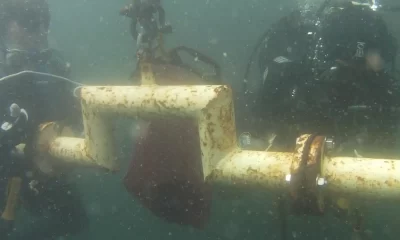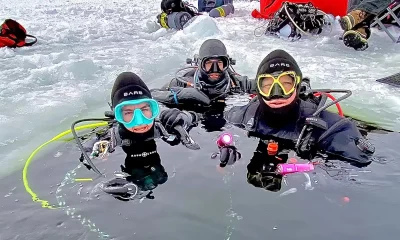Diving Tips & Tricks: Preparing for Cold Water
Prepare yourself to stay warm DURING a dive by staying warm BEFORE a dive.
Each month we provide a series of tips and tricks from instructors and active explorers. Continuing with from last month’s cold water tips and tricks, we return to GUE Instructor Trainer, Guy Shockey for tips on staying warm.
Staying warm before a dive
Prepare yourself to stay warm DURING a dive by staying warm BEFORE a dive. This can be done by wearing warm clothing, such as gloves, scarves, thick socks, and a beanie also known as a tuque, bobcap, knit hat, or knit cap. But it’s most important to focus on keeping your core warm as well with proper layers, or wearing your base layer undergarments under your regular clothes to get them pre-warmed. In “The Science of warmth” they determined that when your core temperature drops too low your body simply stops sending blood out to the extremities in order to protect the vital organs. So keeping your torso warm is the number one way to keep your hands and feet warm too.
“One of the most helpful tips that I ever got was regarding blowing an SMB in cold water with numb lips and not having my breath escape around the SMB into the water. The tip was to place the SMB in the side of my mouth instead of the middle, and voila, it worked! My breath went into the SMB instead of mostly escaping.”
-Ayisha Hassanali, Toronto, Ontario
Staying dry before the dive, meaning not being too warm and sweating, is key as once you are underwater the sweat will make you colder. So layering with a synthetic, wicking base layer to pull the moisture off your skin will help keep you dry (most athletic gear is made with this material). Wool rather than cotton will also help keep your body dry and warm as cotton holds moisture so keep it far from your base layer.
On average the human body’s core temperature is 98.6°F or 37°C. On an individual basis this can vary a few degrees Fahrenheit and about one degree Celsius. Hypothermia, a potentially fatal condition, occurs when our body temperature falls below 95°F or 35°C. Think of shivering as a warning sign that your body is getting too cold. So how can you produce more body heat? Human produced heat is generated through “burning” calories. “Essentially when your body uses energy heat is created”. So eating high calorie and healthy fats before a dive is helpful to for your body to create heat by providing it with lots of energy to burn.
What about post dive?
What can you do after a cold water dive to stay warm? Drinking a warm beverage like, coffee, tea, or hot cocoa helps to get the body to start recirculating heat. Eating after a dive also increases your body’s core temperature by refuelling it with energy to burn, and thus create heat.
UPDATE: Thanks to a reader’s feedback we pulled a part of the video showing divers pouring hot water over the head of a cold, wet diver post dive, along with the commentary. Note that taking a hot shower, or potentially pouring hot water over a cold diver after a dive, even a recreational one, can increase the risk of decompression sickness, particularly skin bends. Somehow, we did not make the correlation with pouring hot water over one’s drysuit/wetsuit and DCS[Full disclosure: We are human divers!]. This procedure could also be dangerous to someone in a hypothermic state. For these reasons, we do not advise doing this. If you have a question or would like to know more please send us an email at indepth@gue.com
Sources: The Science of Warmth
Header Image by Nicole Wächter
Guy Shockey is GUE instructor and trainer who is actively involved in mentoring the next generation of GUE divers.





















































